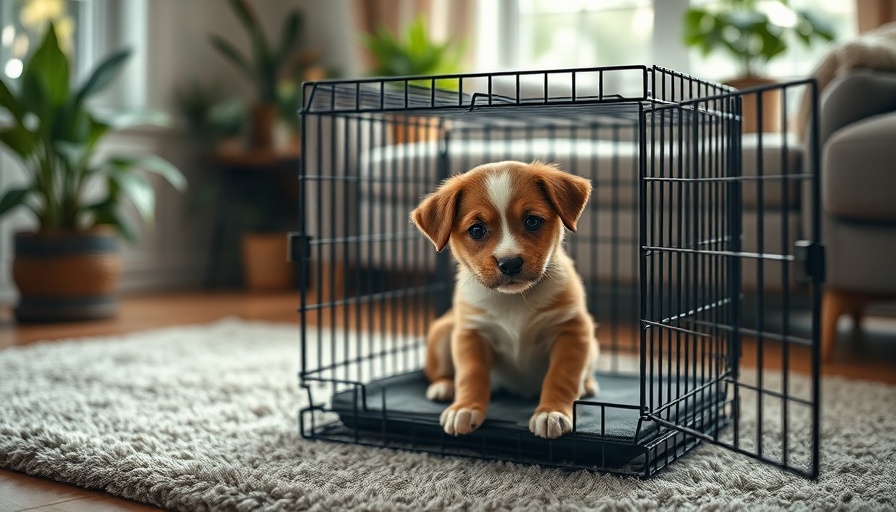
Transform Your Dog’s Crate Experience: Easy Steps to Happiness
Crate training is an invaluable practice for dog owners, providing dogs with their own safe and comfortable haven. In this article, we explore essential steps to help you crate train your dog effectively, ensuring they view the crate positively as their personal den.
Understanding the Crate: More Than Just a Cage
Many people have misconceptions about crate training, viewing it as confinement rather than a necessary tool. Crates serve as sanctuary spaces for dogs, promoting a sense of security. According to the American Kennel Club, dogs inherently seek small, enclosed spaces for comfort. Establishing a crate routine with your pet helps foster a trusting relationship, increasing their happiness and reducing anxiety.
Choosing the Right Crate: Size Matters
When beginning crate training, selection of the proper crate is crucial. Ensure that the crate offers enough space for your dog to stand, turn around, and lie down comfortably. Avoid oversized crates as they might cause your dog to see the crate more as a play area than a secure spot. An ideal crate is sturdy, well-ventilated, and can be modified for your pet's size as they grow.
Positive Associations: Building Comfort
Step one in crate training involves introducing the crate in a positive manner. Keep the crate door open, and place your dog’s favorite toys and treats inside. This encourages exploration and familiarity. To solidify positive associations, utilize treats and praise when your dog enters the crate willingly, avoiding any negative reinforcement.
Incorporating Mealtime for Better Associations
Integrate the crate into your dog’s feeding routine, gradually moving their food bowl from the vicinity of the crate to inside it. This method links the crate with nourishment, furthering the bond of trust. Dogs are naturally conditioned to understand that pleasant activities happen in their crate, which helps ease them into the habit of using it.
Patience and Routine: The Keys to Success
Consistency is essential in crate training. Use specific words such as “crate” or “kennel” in an upbeat tone to signal the desired behavior. Gradually increasing the amount of time you spend with your dog in the crate also reinforces that it's a safe and enjoyable experience. Remember, gradual confinement is essential – only close the door once your dog willingly enters.
Gradually Extending Alone Time: Building Trust
Once your dog is comfortable staying in the crate with the door closed, begin extending their alone time in small increments. Start with brief periods and work up, always ensuring your dog is well-exercised beforehand. This method helps prevent anxiety associated with being left alone by establishing a feeling of security.
A Comprehensive Guide to Making Crate Training Easier
The following tips are based on advice from expert trainers. Incorporate crate games to encourage your dog to enter the crate voluntarily. Games such as tossing toys or treats inside can create a fun atmosphere. Avoid using the crate for punishment to maintain its positive reputation. Punishing a dog by placing them in their crate can instill fear and anxiety, defeating the purpose of the training. Instead, rely on praise and treats.
Final Thoughts: Embracing the Process of Crate Training
Crate training can take time and patience, but the positive results are worth the effort. By maintaining a comforting environment, establishing a consistent routine, and ensuring your dog enjoys their crate time, you'll create a serene and enjoyable experience. Proper crate training not only enhances your dog's safety and comfort but also strengthens the bond you share as pet and owner. Thus, whether you are house training a puppy or creating a safe space for your adult dog during travels, effective crate training is pivotal for a happy dog ownership journey.
Take Action! Start your crate training journey today with these insights to ensure your dog feels secure and happy in their new den!
 Add Row
Add Row  Add
Add 


Write A Comment